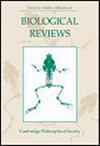修订后的六王国生命体系。
摘要
一个修订的六王国系统的生命是提出,直到下腭的水平。在我1983年的系统中,细菌被视为一个单一的领域,而真核生物只被分为五个领域:原生动物、动物类、真菌类、植物类和染色质类。中高级分类(超界、亚界、分支、次界、超门、次门和次门)被广泛使用,以避免将生物体划分为过多的界和门(目前只承认60个)。原生动物(Protozoa)和动物界(Animalia)这两个“动物学”界适用于国际动物命名法,细菌界适用于国际细菌命名法,三个“植物学”界(Plantae, Fungi, Chromista)适用于国际植物命名法。自cavaliersmith(1981)以来,细菌和植物界的界限一直没有改变。由于蛋白质序列证据表明这些线粒体细胞内寄生虫与传统真菌有关,而不是原生动物,因此真菌界通过添加微孢子虫而扩大。真菌又分为4门20纲;全面修订了真菌亚类及以上的分类。根据分子系统发育的证据,黏液动物实际上是动物界,而不是原生动物,而中生代动物与双边动物有关,因此原生动物和动物界被修改。动物界分为四个亚界:辐射门(Porifera门、刺胞门、Placozoa门、Ctenophora门)、粘虫门、中虫门和双边门(双边动物:所有其他门)。在动物界有几个新的高级分类,包括3个新的门:棘爪目(轮虫、棘头目、腹足目、颌口目)、腕足目(腕足目和栉足目)和足目目(爪足目和缓步目),因此目前只承认23个动物门。古动物,在这里仅限于元胞门和毛虫门,被视为原生动物中的一个亚界,就像我在1983年的六界系统中一样,而不是作为一个单独的界。最近修订的根足纲进一步修改,增加了更多的鞭毛虫,并删除了一些“根足纲”,因此更名为尾足纲。通过将菌丝虫和古阿米巴(现在都是下阿米巴)与Lobosa亚门(现在包括传统的有氧Lobosa阿米巴和多毛阿米巴)一起归类为变形虫门内的一个新的Conosa亚门,减少了原生动物门的数量。单孢子虫和原微孢子虫现在都归入孢子虫门。这些变化使目前公认的原生动物门总数仅为13个,分为两个亚界:太古动物亚界和新动物亚界(新动物亚界在界限上进行了修改,增加了一个新的亚界,包括原生动物门和原生动物门)。这些变化与大系统分类学的原则有关,大系统分类学在这里被定义为集中在更高层次的类、门和界的系统分类学。这些原则也使得我们希望将古细菌列为细菌王国的一个分支,而不是一个单独的王国。古细菌与正细菌属一起组成了一个新的亚种——单细菌属,由一层膜包围的所有细菌组成。胞质和外膜分离的细菌亚界又分为脂菌亚界和糖菌亚界,脂菌亚界缺乏脂多糖,外膜中只有磷脂;糖菌亚界外膜小叶中有脂多糖,内小叶中有磷脂。(抽象截断)A revised six-kingdom system of life is presented, down to the level of infraphylum. As in my 1983 system Bacteria are treated as a single kingdom, and eukaryotes are divided into only five kingdoms: Protozoa, Animalia, Fungi, Plantae and Chromista. Intermediate high level categories (superkingdom, subkingdom, branch, infrakingdom, superphylum, subphylum and infraphylum) are extensively used to avoid splitting organisms into an excessive number of kingdoms and phyla (60 only being recognized). The two 'zoological' kingdoms, Protozoa and Animalia, are subject to the International Code of Zoological Nomenclature, the kingdom Bacteria to the International Code of Bacteriological Nomenclature, and the three 'botanical' kingdoms (Plantae, Fungi, Chromista) to the International Code of Botanical Nomenclature. Circumscriptions of the kingdoms Bacteria and Plantae remain unchanged since Cavalier-Smith (1981). The kingdom Fungi is expanded by adding Microsporidia, because of protein sequence evidence that these amitochondrial intracellular parasites are related to conventional Fungi, not Protozoa. Fungi are subdivided into four phyla and 20 classes; fungal classification at the rank of subclass and above is comprehensively revised. The kingdoms Protozoa and Animalia are modified in the light of molecular phylogenetic evidence that Myxozoa are actually Animalia, not Protozoa, and that mesozoans are related to bilaterian animals. Animalia are divided into four subkingdoms: Radiata (phyla Porifera, Cnidaria, Placozoa, Ctenophora), Myxozoa, Mesozoa and Bilateria (bilateral animals: all other phyla). Several new higher level groupings are made in the animal kingdom including three new phyla: Acanthognatha (rotifers, acanthocephalans, gastrotrichs, gnathostomulids), Brachiozoa (brachiopods and phoronids) and Lobopoda (onychophorans and tardigrades), so only 23 animal phyla are recognized. Archezoa, here restricted to the phyla Metamonada and Trichozoa, are treated as a subkingdom within Protozoa, as in my 1983 six-kingdom system, not as a separate kingdom. The recently revised phylum Rhizopoda is modified further by adding more flagellates and removing some 'rhizopods' and is therefore renamed Cercozoa. The number of protozoan phyla is reduced by grouping Mycetozoa and Archamoebae (both now infraphyla) as a new subphylum Conosa within the phylum Amoebozoa alongside the subphylum Lobosa, which now includes both the traditional aerobic lobosean amoebae and Multicilia. Haplosporidia and the (formerly microsporidian) metchnikovellids are now both placed within the phylum Sporozoa. These changes make a total of only 13 currently recognized protozoan phyla, which are grouped into two subkingdoms: Archezoa and Neozoa the latter is modified in circumscription by adding the Discicristata, a new infrakingdom comprising the phyla Percolozoa and Euglenozoa). These changes are discussed in relation to the principles of megasystematics, here defined as systematics that concentrates on the higher levels of classes, phyla, and kingdoms. These principles also make it desirable to rank Archaebacteria as an infrakingdom of the kingdom Bacteria, not as a separate kingdom. Archaebacteria are grouped with the infrakingdom Posibacteria to form a new subkingdom, Unibacteria, comprising all bacteria bounded by a single membrane. The bacterial subkingdom Negibacteria, with separate cytoplasmic and outer membranes, is subdivided into two infrakingdoms: Lipobacteria, which lack lipopolysaccharide and have only phospholipids in the outer membrane, and Glycobacteria, with lipopolysaccharides in the outer leaflet of the outer membrane and phospholipids in its inner leaflet. (ABSTRACT TRUNCATED)

 求助内容:
求助内容: 应助结果提醒方式:
应助结果提醒方式:


